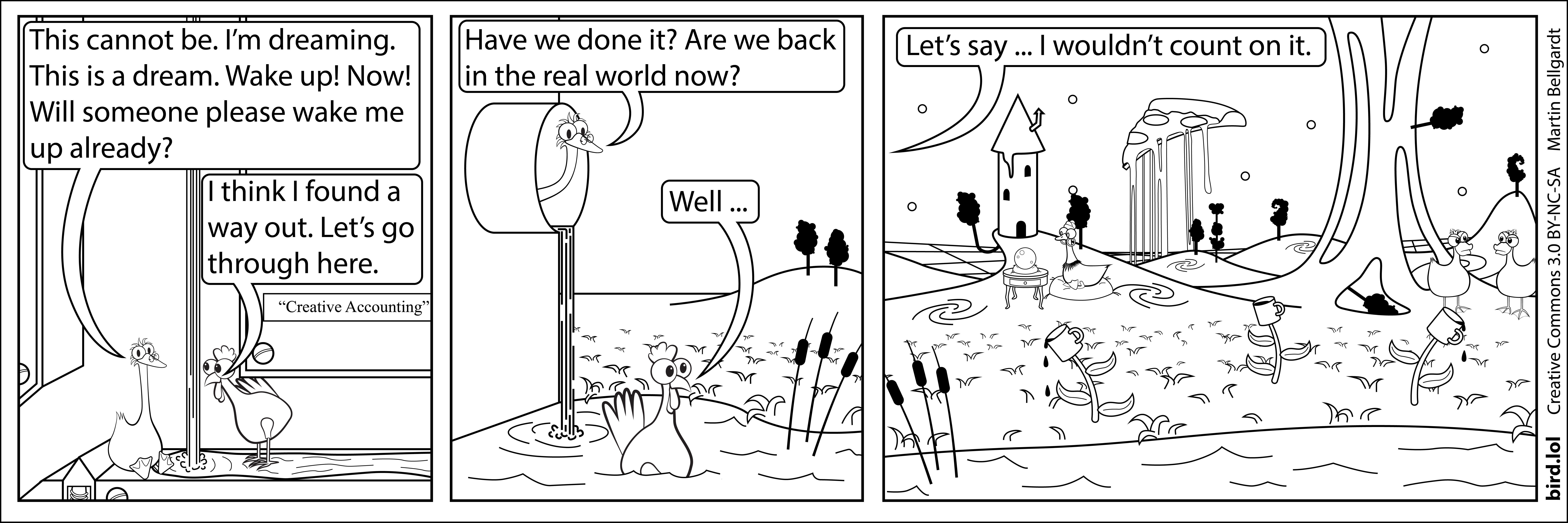Last week I suggested that I might do a post about visiting the dark side of existence and I still want to do that. But before, I wanted to address the question in the title, as it was posed by a reader. It is a very general question, and I don't think there is a definite answer to it. But I think it is understandable that you might want to know my perspective, since I wrote so much about art in the last weeks. So here we go:
Let's start with a few necessary but not sufficient conditions. For something to constitute art, it has to be created by an intelligent being that is capable of understanding art. So in my point of view, natural rock formations or anything else created by natural processes through random chance cannot constitute art (pictures of them might still do, but more on that later). Another necessary condition is that it is created intentionally. You cannot create art by accident. If you were to trip and spill a cup of coffee onto a canvas, that does not constitute art. The line here is very fine, however, as these accidents might produce ideas for artworks. I would say that, if you see the dried coffee on the canvas and think "That looks pretty neat" and sell it as an artwork, it becomes art. It's the act of intentionally defining it as an artwork that makes it art. If that doesn't make too much sense right now, don't worry and keep reading.
Now, we humans create a lot of things intentionally. But a door handle, a screwdriver or a fire extinguisher are not necessarily art. If something is created because of a concrete problem and its design was entirely driven by the goal of solving this problem, it is not art. For something to constitute art, there has to be some element to it that is unnecessary. In a sense, it's a defiance of logic. For example, you could decorate the door handle with some intricate patterns. These patterns would be neither necessary nor helpful to the function of the door handle. It would work just as well without and it would be much easier to produce. Yet, by decorating it, it gets augmented with a secondary purpose: Beauty.
This brings us to a sufficient, but not necessary condition for something to be art. If something is created to be beautiful or additional effort is invested to make something beautiful, it constitutes art. The concept of beauty is closely linked to art. In many cases it is the main reason why people want art. If you want a definition for beauty now, I'll have to disappoint you. It is simply a concept that exists in the human mind and it is neither possible to define it with words, nor is it possible to define what makes something beautiful, as this is highly subjective. What I can say, however, is that beauty is very enjoyable and it is one of the things that make life worth living. So the pursuit of beauty is a fundamental reason why people want to create art. For example, product design is a form of art. A screwdriver could be designed to be beautiful through simplicity. In this case, the unnecessary part is not that it contains unnecessary patterns, but that someone tweaked its proportions, shape and material with the intention to make it beautiful. They started off with an object that was already perfectly suited to fulfill the function of a screwdriver and ended up with one that is works just as well. It was done with the sole purpose to invoke beauty.
That being said, defining art as "something that is done with the sole purpose to invoke beauty" would be way too narrow. A piece of art can invoke lots of other things in humans. This touches on what I wrote about in the last two posts. In essence, art is a form of communication. However, not all forms of communication are art. For it to constitute art, the communication has to happen on a subconscious level. To make another needlessly strange example, the fire extinguisher can become art by putting it in the middle of a jungle. It's still the same, unremarkable fire extinguisher, but it fulfills all the previous criteria, assuming it has been put there deliberately by a human instead of falling out of a plane or something like that. It is certainly unnecessary. The act of putting it in the jungle communicates something. Honestly thinking about why anyone would put a fire extinguisher in a jungle is just as much interpretation of art as studying a painting and pondering the artist's choices of color. In my view, triggering a thought process like this is the essence of art.
This was my best effort to define art. I hope that this made it a bit clearer. I'm aware that this likely brings up a lot of new questions. While I can't guess what your questions are, one question that I would like to answer in one of the following posts is: "Following this definition, can artificial intelligence generate art?".

